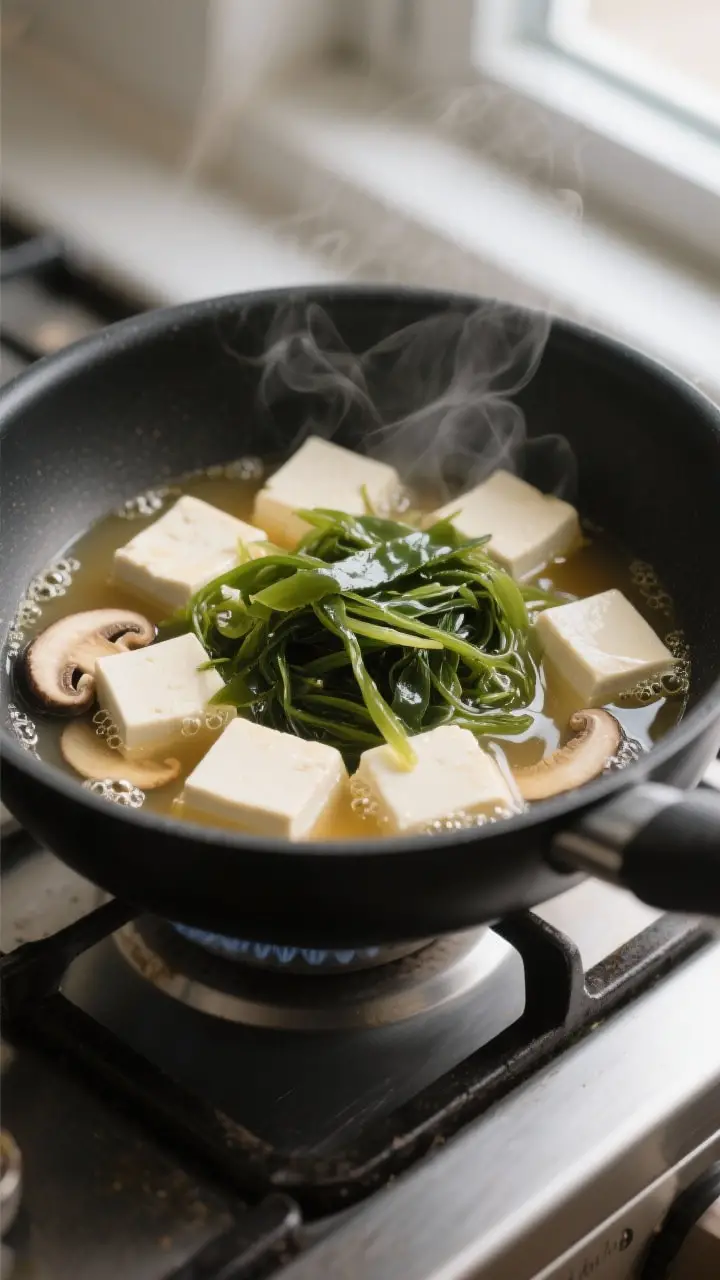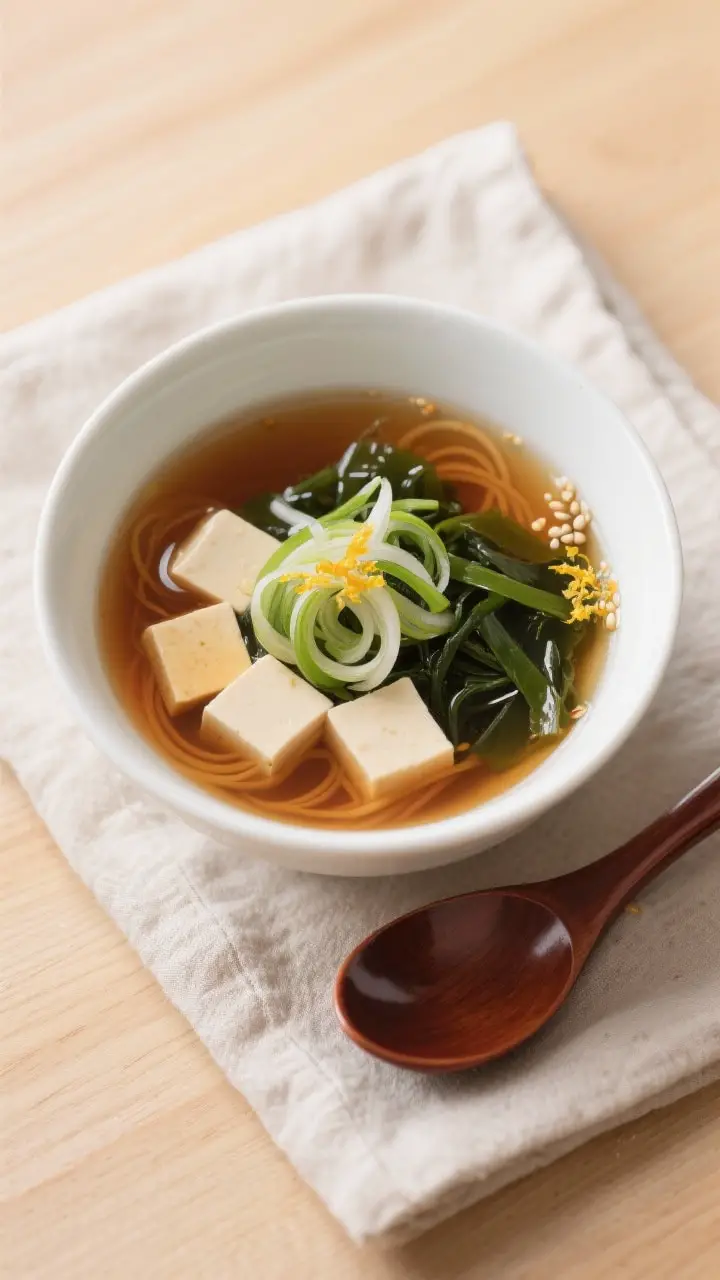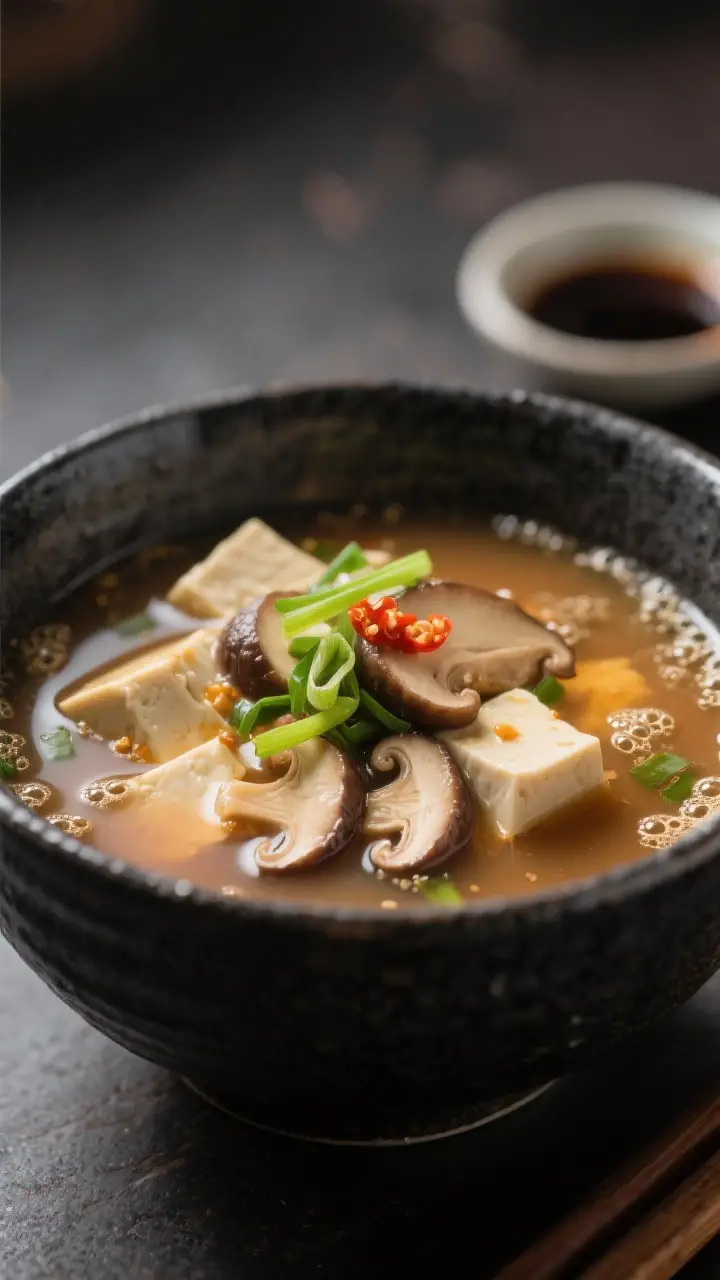You don’t need a chef’s jacket or a plane ticket to Tokyo to make miso soup that hits like comfort and clarity in one cup. This is a no-fuss, big-flavor, “why haven’t I been making this every week?” kind of recipe. The secret isn’t complicated—just smart ingredients and clean technique.
It’s fast, forgiving, and the kind of thing that makes you feel like you’ve got your life together, even if you ate cereal over the sink yesterday. Ready to upgrade your five-minute meal game without spending five hours?
What Makes This Recipe So Good

- Clean, deep flavor: Kombu and bonito flakes (or a vegan swap) create a savory broth that tastes like it simmered all day—even though it didn’t.
- Fast and flexible: This miso soup is ready in about 15 minutes. You can dress it up or keep it minimalist.Your call.
- Gut-friendly comfort: Miso is a fermented superstar with probiotics that love your digestion. Just don’t boil it—more on that later.
- Balanced and light: It’s satisfying without being heavy, perfect for a quick lunch, a side for dinner, or a calming reset between meetings.
- Authentic technique, simple steps: No complicated steps, just the right order and heat. That’s the difference between “meh” and magical.
Shopping List – Ingredients
- Kombu (dried kelp): 1 piece about 4×4 inches (for dashi base)
- Bonito flakes (katsuobushi): 1 cup loosely packed (for dashi; use shiitake for vegan)
- Water: 4 cups
- Miso paste: 3–4 tablespoons (white/shiro for mild and sweet; red/aka for deeper, saltier flavor; awase is a blend)
- Silken or soft tofu: 6–8 ounces, cut into 1/2-inch cubes
- Wakame (dried seaweed): 1–2 tablespoons, rehydrated
- Green onions (scallions): 2–3, finely sliced
- Optional boosters: 3–4 fresh shiitake mushrooms (sliced), a splash of soy sauce or tamari, a few drops of toasted sesame oil, yuzu zest, or chili crisp for heat
- Vegan dashi option: Replace bonito with 3–4 dried shiitake and increase kombu slightly
Cooking Instructions

- Prep the seaweed and tofu: Soak the wakame in cool water for 5 minutes until it expands.Drain and chop if needed. Cube the tofu and slice the scallions.
- Make the dashi base: Place kombu in a pot with 4 cups of water. Heat gently over medium until small bubbles appear (about 10 minutes). Do not boil.
- Remove kombu: Right before it boils, remove and discard or save for another use.This avoids bitterness and sliminess.
- Infuse with bonito: Add bonito flakes to the hot water. Let them steep off heat for 3–4 minutes. Strain through a fine sieve or cheesecloth.That’s your dashi.
- Vegan route: If using shiitake instead of bonito, steep 3–4 dried shiitake with the kombu for 15–20 minutes, then remove kombu and strain. Slice the shiitake and add to the soup later.
- Warm, don’t boil: Return the strained dashi to the pot over low heat. Add tofu, wakame, and optional sliced shiitake.Heat gently for 2–3 minutes.
- Whisk in miso: In a small bowl, ladle a bit of hot dashi and whisk in the miso until smooth. Turn off the heat and stir the miso mixture back into the pot. Keep the soup below a simmer to protect flavor and probiotics.
- Finish and taste: Add scallions. Taste and adjust with an extra teaspoon of miso or a splash of soy/tamari if needed.A drop or two of toasted sesame oil? Only if you like a nutty vibe.
- Serve immediately: Ladle into bowls and enjoy hot. Yes, that was fast.No, you don’t need a trophy—your soup is the trophy.
Preservation Guide
- Short-term storage: Refrigerate soup (without miso added) for up to 3 days. Add miso right before serving for best flavor and benefits.
- If miso is already mixed in: It’s fine to refrigerate up to 2 days. Reheat gently—do not boil—just until warm.
- Freezing: Freeze dashi, tofu, and mushrooms separately if possible.Miso can be added fresh after reheating. Frozen tofu changes texture (spongier), which some people actually love.
- Reheat like a pro: Low heat, slow warm. If it starts to simmer, you’re going too hard.Remember: miso hates boiling.

What’s Great About This
- Weeknight-friendly: Fifteen minutes from zero to steaming bowl of comfort.
- Highly customizable: Switch miso types, add veggies, tweak saltiness. It’s a framework, not a prison.
- Budget-conscious: Pantry items like miso, kombu, and bonito last a long time and power many bowls.
- Nutrient-dense: Protein from tofu, minerals from seaweed, fermented goodness from miso—your microbiome will send a thank-you note, IMO.
Pitfalls to Watch Out For
- Boiling miso: This flattens flavor and zaps probiotic benefits. Add miso off heat.
- Overcooking kombu: Boiling the kombu makes the broth slimy and bitter.Pull it before the boil.
- Too much miso: Miso is salty. Start with less and adjust. You can always add, but subtraction?Not so easy.
- Skipping the dashi: Water alone = bland. Even a quick kombu-steep makes a massive difference.
- Chunky miso bits: Whisk miso with hot broth in a small bowl before adding to the pot for a silky finish.
Mix It Up
- Greens galore: Add baby spinach, napa cabbage, or bok choy in the last minute of heating.
- Umami boost: A tiny splash of soy or tamari, or a dab of white sesame paste for creaminess.
- Seafood twist: Add a few shrimp or clams to the dashi and simmer gently before the miso step.
- Spicy edition: Finish bowls with chili crisp, shichimi togarashi, or a dab of gochujang for fusion heat.
- Noodle upgrade: Slide in cooked udon or soba for a heartier bowl. Don’t overpack—broth is the star.
- Seasonal veggies: Corn kernels, daikon matchsticks, or sweet potato cubes (par-cooked) all play nice.
- Miso mashup: Blend white and red miso to fine-tune sweetness vs. depth.Awase miso is the best of both worlds.

Easy and Authentic Miso Soup Recipe
Equipment
- Small Pot
- Fine Sieve or Cheesecloth
Ingredients
Dashi Base
- 4 cups water
- 1 piece kombu (dried kelp) about 4×4 inches
- 1 cup bonito flakes (katsuobushi) loosely packed; use 3–4 dried shiitake for vegan
Soup Ingredients
- 3 tbsp miso paste white, red or awase
- 6 oz silken tofu cut into 1/2-inch cubes
- 1.5 tbsp wakame (dried seaweed) rehydrated
- 3 green onions (scallions) finely sliced
Instructions
- Soak wakame in cool water for 5 minutes until it expands. Drain and chop if needed. Cube tofu and slice scallions.
- Place kombu in a pot with water. Heat gently over medium until small bubbles appear (about 10 minutes). Do not boil.
- Remove kombu right before boiling. Add bonito flakes and steep off heat for 3–4 minutes. Strain through a fine sieve. This is your dashi.
- Return dashi to pot over low heat. Add tofu, wakame, and optional shiitake. Heat gently for 2–3 minutes.
- In a small bowl, mix hot dashi with miso until smooth. Turn off heat and stir miso mixture back into soup. Do not boil.
- Add scallions and adjust to taste with more miso or soy sauce. Serve hot.
Notes
Nutrition
FAQ
What type of miso should I use?
Shiro (white) miso is mild and slightly sweet—great for beginners or delicate soups. Aka (red) miso is bolder and saltier, ideal for a deeper, wintery vibe. Awase is a blend of both and a safe one-tub solution for most kitchens.
Can I make it vegan?
Absolutely.
Use kombu and dried shiitake to make vegan dashi instead of bonito. Slice the rehydrated shiitake and add them back to the soup for extra umami.
Why can’t I boil the miso?
Boiling dulls the nuanced flavors and can reduce the live cultures in traditionally fermented miso. Keep it under a simmer, whisk it in at the end, and your taste buds (and gut) win.
What’s the best tofu for miso soup?
Soft or silken tofu gives a gentle, custardy texture that pairs perfectly with the light broth.
If you prefer more bite, use firm tofu, but cut it small so it doesn’t steal the spotlight.
How salty should it be?
Miso varies by brand and type. Start with 3 tablespoons for 4 cups of broth and taste. Add up to 1 tablespoon more if needed.
If it tastes flat, it might need a tad more miso or a splash of soy—salt isn’t the only lever.
Can I make dashi in advance?
Yes. Dashi keeps in the fridge for up to 4 days or in the freezer for a month. Pro move: freeze in portions so miso soup becomes a 5-minute miracle, FYI.
What if I don’t have kombu?
Use instant dashi granules in a pinch.
It’s not exactly the same, but it will get you 80% of the way there with minimal fuss.
How do I avoid gritty miso at the bottom?
Strain the miso slurry through a small sieve into the pot or whisk it thoroughly with hot broth before adding. Gentle stirring right before serving keeps it even.
The Bottom Line
Miso soup is the definition of simple done right: a clean broth, a few quality ingredients, and careful heat control. Master the dashi, respect the miso, and you’ve got a five-star bowl in minutes.
It’s adaptable, affordable, and ridiculously comforting. Make it once, and it’ll be on repeat—because greatness isn’t complicated, it’s consistent.













